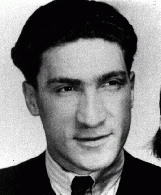You searched for: c%E1%BA%A7u%20th%E1%BB%A7%20%C4%91%E1%BA%AFt%20nh%E1%BA%A5t%20th%E1%BA%BF%20gi%E1%BB%9Bi%E3%80%900242.com%E3%80%91thi%20%C4%91%E1%BA%A5u%20bundesliga
<< Previous | Displaying results 276-300 of 400 for "c%E1%BA%A7u%20th%E1%BB%A7%20%C4%91%E1%BA%AFt%20nh%E1%BA%A5t%20th%E1%BA%BF%20gi%E1%BB%9Bi%E3%80%900242.com%E3%80%91thi%20%C4%91%E1%BA%A5u%20bundesliga" | Next >>
-
Trawniki
ArticleFrom July 1941-May 1944, the SS camp at Trawniki had several purposes. It is best known as the training site for auxiliary police guards used in Nazi killing centers. Learn more.

-
Deceiving the Public
ArticleThe Nazis frequently used propaganda to disguise their political aims and deceive the German and international public. Learn more.

-
France
ArticleLearn about France during the Holocaust and WWII, the liberation of France, postwar trials, and the legacy of Vichy France’s collaboration with Nazi Germany.
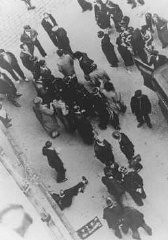
-
International Military Tribunal at Nuremberg
ArticleThe International Military Tribunal (IMT) opened in Nuremberg within months of Germany’s surrender. Learn about the judges, defendants, charges, and legacies.

-
Dismissal letter
DocumentDuring the interwar period Dr. Susanne Engelmann served as the principal of a large public high school for girls in Berlin. This letter notified her of her dismissal, as a "non-Aryan," from her teaching position. The dismissal was in compliance with the Civil Service Law of April 7, 1933. On April 7, the German government issued the Law for the Restoration of the Professional Civil Service (Gesetz zur Wiederherstellung des Berufsbeamtentums), which excluded Jews and political opponents from all civil…
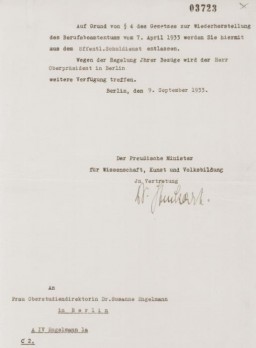
-
The Evian Conference
ArticleAt the July 1938 Evian Conference, delegates from nations and organizations discussed the issue of Jewish refugees fleeing persecution in Nazi Germany. Learn more
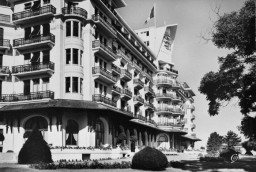
-
Sonderkommandos
ArticleGroups of prisoners known as Sonderkommandos were forced to perform a variety of duties in the Nazi camp system, including in the gas chambers and crematoria.
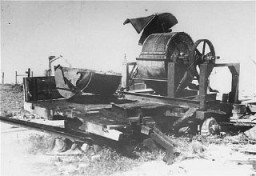
-
Sophie Ehrhardt performs a racial examination on a Romani woman
PhotoSophie Ehrhardt, a German hygienist working with Dr. Robert Ritter, performs a racial examination on a Romani woman. Berlin, Germany, c. 1936-1940. During the Nazi era, Dr. Robert Ritter was a leading authority on the racial classification of people pejoratively labeled “Zigeuner” (“Gypsies”). Ritter’s research was in a field called eugenics, or what the Nazis called “racial hygiene.” Ritter worked with a small team of racial hygienists. Among them were Eva Justin and Sophie Ehrhardt. Most…

-
Eugeniusz Rozenblum
ID CardEugeniusz's parents married in 1922 in the Soviet Union, where his father owned a textile mill. Fearing arrest by the Soviets for being "bourgeois," Eugeniusz's parents fled to Poland, where Eugeniusz was born. 1933-39: Eugeniusz was a secondary school student and was preparing to enter university, either in Poland or at the Hebrew University in Palestine. The German occupation of Lodz in September 1939 interrupted his schooling. One month after the occupation, a German soldier came to his family's door…

-
Ludmilla Schatz
ID CardLudmilla was one of four children born to Jewish parents in a small industrial city in southwestern Ukraine when the area was part of Tsarist Russia. Ludmilla grew up in Odessa, but she and her mother left in 1919 when Ludmilla's father was killed during the Russian civil war. Ludmilla and her mother emigrated to France and settled near Paris. Ludmilla married, and gave birth to a daughter in 1930. 1933-39: With her knowledge of Russian, French and German, Ludmilla felt comfortable in cosmopolitan Paris.…
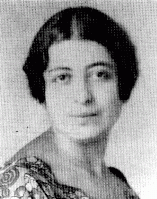
-
Magda Rein
ID CardMagda was the oldest of two children born to observant Jewish parents. They lived in Satoraljaujhely, a town in northeastern Hungary on the Czechoslovakian border. Jews represented some 20 percent of the town's approximately 18,000 persons. Magda's father owned a bakery; her mother was a midwife. 1933-39: At 10 years of age, Magda began accompanying her mother when she attended to births nearby. Her mother helped all women--Jews, Roma (Gypsies) and peasants in the surrounding villages. When Magda was 12,…

-
Pawel Zenon Wos
ID CardPawel was the oldest of four children born to Roman Catholic parents in Poland's capital of Warsaw. Pawel's father had worked for the Polish merchant marine before starting his own textile business in 1930. The family moved to a comfortable apartment near the Royal Castle and the Vistula River. Pawel excelled in sports, including basketball and tennis. His favorite sport was rowing. 1933-39: In May 1939 Pawel became an army reserve officer and went to training camp near Augustow. On the morning of…

-
Itka Wlos
ID CardItka was raised in a Yiddish-speaking, religious Jewish family in Sokolow Podlaski, a manufacturing town in central Poland with a large Jewish population of about 5,000. Itka came from a poor family. After completing her public schooling in Sokolow Podlaski at the age of 14, she began to work. 1933-39: Itka was a young woman, unmarried and living with her parents when war between Germany and Poland broke out on September 1, 1939. German aircraft bombed Sokolow Podlaski's market and other civilian targets…

-
Chaim Werzbe
ID CardChaim was raised in a Yiddish-speaking, religious Jewish family in Sokolow Podlaski, a manufacturing town in central Poland with a large Jewish community of about 5,000. The economic activities of most of the townspeople were closely tied to those of nearby Warsaw and surrounding farming communities. As a young man, Chaim liked to play chess and was active in a local Zionist organization. 1933-39: Chaim made a living in the grain business. After settling down, he married a widow who was older than he and…

-
Fela Perznianko
ID CardFela was the older of two children born to Jewish parents living in Zakroczym, a town on the Vistula River near Warsaw. Her father was a respected attorney. As a young woman, Fela worked as a hat designer in Warsaw, until she married Moshe Galek when she was in her late 20s. She moved to the nearby town of Sochocin, where her husband owned a pearl-button factory. Fela and Moshe raised four daughters. 1933-39: In 1936 the Galeks moved to Warsaw, attracted by the city's cultural life. When Germany invaded…

-
Herschel Rosenblat
ID CardHerschel was the youngest of three sons born to Yiddish-speaking Jewish parents. When Herschel was a child, his family moved to Radom, an industrial city which had a large Jewish population. By 1930, Herschel had finished his schooling and was helping in his father's shoemaking business. With the help of a friend, he later found a full-time job as a house painter. 1933-39: Herschel's career as a painter was interrupted for two years when he was drafted into the Polish cavalry at the age of 20. When…

-
Joseph Muscha Mueller
ID CardJoseph was born in Bitterfeld, Germany, to Roma ("Gypsy") parents. For reasons unknown, he was raised in an orphanage for the first one-and-a-half years of his life. At the time of Joseph's birth, some 26,000 "Gypsies"—members of either the Sinti or Roma tribes—lived in Germany. Though most were German citizens, they were often discriminated against by other Germans and subjected to harassment. 1933-39: At age one-and-a-half, Joseph was taken into foster care by a family living in Halle, a city some…
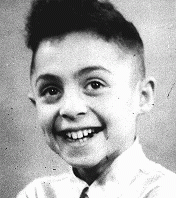
-
Berta Rivkina
ID CardBerta was the youngest of three girls born to a Jewish family in Minsk, the capital of Belorussia. Before World War II, more than a third of the city was Jewish. Berta's father worked in a state-owned factory building furniture, an occupation in which several of his relatives also made a living. 1933-39: Berta and her family lived on Novomesnitskaya Street in central Minsk, only a few blocks from the Svisloch River. Her older sister, Dora, loved to swim there in the summer. By the time Berta was in the…
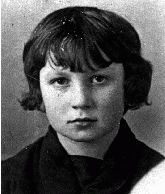
-
Mendel Rozenblit
ID CardMendel was one of six children born to a religious Jewish family. When Mendel was in his early 20s, he married and moved with his wife to her hometown of Wolomin, near Warsaw. One week after the Rozenblits' son, Avraham, was born, Mendel's wife died. Distraught after the death of his young wife and left to care for a baby, Mendel married his sister-in-law Perele. 1933-39: In Wolomin Mendel ran a lumber yard. In 1935 the Rozenblits had a daughter, Tovah. When Avraham and Tovah were school age, they began…

-
Frederik Polak
ID CardFrederik was raised in a religious Jewish home. His father was a scribe of Jewish holy texts. Frederik studied accounting and became a certified public accountant. After his father died, he helped support his three sisters, his blind brother and his mother. When he was in his mid-20's, Frederik married and started his own family. 1933-39: Creating an atmosphere of Jewish observance in the home was important to Frederik and his wife. They loved to celebrate the Sabbath and the Jewish holidays with their…
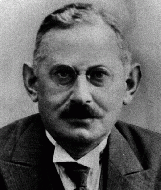
-
Mina Beker
ID CardMina, born Mina Friedman, was the youngest of four daughters born to a Jewish family in the Lithuanian town of Jonava. At the age of 18, Mina married Osser Beker, a lumber dealer. The couple settled in Jonava where Mina worked as a seamstress. The Bekers had two sons and two daughters, but their oldest son died in a childhood accident. 1933-39: Mina's son Abe attended a Jewish religious school in Jonava. But since Mina had received an extensive Jewish education, she decided to teach her daughters at home.…

-
Schloma Wolf (Willy) Szapiro
ID CardBorn to a Jewish family, Willy left Poland at age 20 and emigrated to Palestine. He became active in the workers' organization to end the British mandate there. His activities led to his arrest on May 1, 1931. After serving a two-year prison sentence, Willy was expelled from Palestine. 1933-39: In 1933 Willy left Palestine for Austria, where he joined the ranks of the workers' movement. The economic depression in Austria gave momentum to the movement's cause, and Willy and his friends were closely watched…
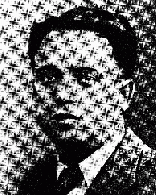
-
Karl Gorath
ID CardKarl was born in the small town of Bad Zwishenahn in northern Germany. When he was 2, his family moved to the port of Bremerhaven. His father was a sailor and his mother became a nurse in a local hospital. After his father died, Karl continued to live with his mother. Karl was 20 when he began training as a deacon at his parish church. 1933-39: Karl was 26 when his jealous lover denounced him and he was arrested at his house under paragraph 175 of the criminal code, which defined homosexuality as an…
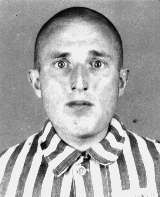
-
Monique Jackson
ID CardMonique's Jewish parents met in Paris. Her father had emigrated there from Russia to study engineering, and her mother had come from Poland as a young child. Monique's father did not have enough money to finish university, so he went to work as an upholsterer. He also shared a small business which sold his hand-tooled leather purses. 1933-39: Monique's mother was 20 when she gave birth to Monique in 1937. Two years later, Parisians were threatened by the possibility of bombing by the Germans, and French…

-
Coenraad Rood
ID CardCoenraad was born to a Jewish family in Amsterdam that traced its roots in the Netherlands back to the 17th century. After graduating from public school, Coenraad went on to train as a pastry maker at a trade school. But after completing his training at the age of 13, he decided for health reasons to change professions, and he began to study tailoring. 1933-39: Coenraad finished apprenticing as a tailor in 1937 when he was 20. Then he spent a year working as a nurse in a Jewish home for the permanently…
